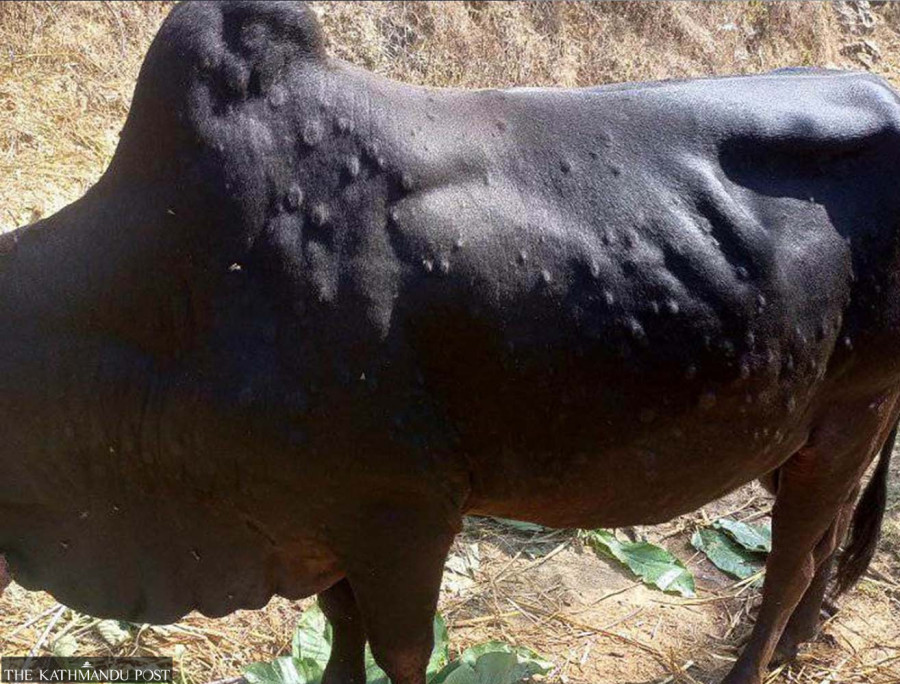National
Contagious cattle disease spreads in hill districts
The lumpy skin disease has already spread to 35 districts, killing more than 70 cattle and infecting around 15,000 during the current fiscal year.
Post Report
More than 70 cattle died of lumpy skin disease, which has spread to almost all wards of Belaka Municipality of Udayapur district. Officials at the municipality said that about 15 to 20 cases of infection or deaths get reported in the municipality every day.
“Locals complain of having incurred heavy losses, especially those involved in the dairy business,” said Saran Chaulagain, an official at the municipality. “We do not have any answer to give them. We have procured some medicines for symptomatic treatment of the infection, which can prevent animal deaths but we cannot help them recover the loss caused by the infection to their cattle.”
Lumpy skin disease, also called LSD, is caused by a lumpy skin disease virus, an infectious disease that primarily affects cattle. The virus is from the family Poxviridae. The virus mainly spreads through blood-sucking vectors—ticks, mites, and mosquitoes.
In the current fiscal year, more than 500 cattle have died and over 15,000 have been infected with the viral disease in 35 districts of the country. It takes 20 to 30 days or more to get animals infected with the viral disease cured. Officials said farmers in the hilly districts lost more of their oxen due to their use in farming at a time when the infections are rising.
“Milk production will be stopped completely in most of the cases and in some cases, the milk production stopped completely even after the ailment was cured,” said Dr Chandra Dhakal, information officer at the Department of Livestock Services. “Those who lost their cattle get an insurance amount if they have insured their cattle but the problem is that a majority of the farmers do not insure their cattle.”
The department said that it is also working toward producing a vaccine against the lumpy skin disease within the country. The agency under the department, produces more than 50 million doses of various animal vaccines every year.
“We have the capacity and the infrastructure to produce animal vaccines,” said Dhakal. “What we need is budgetary support from the government.”
Veterinarians say the infected cattle suffer from acute fever, discharge from the eyes and nose, salivation, and soft blister-like nodules all over their bodies.
After infection, animals immediately start losing weight due to difficulty in eating, which ultimately affects their milk production. Pregnant cows and buffaloes could suffer a miscarriage and infected animals could sometimes die.
As the virus is not zoonotic, the chances of humans getting infected are very slim, say experts.




 14.83°C Kathmandu
14.83°C Kathmandu









%20(1).jpg&w=300&height=200)



